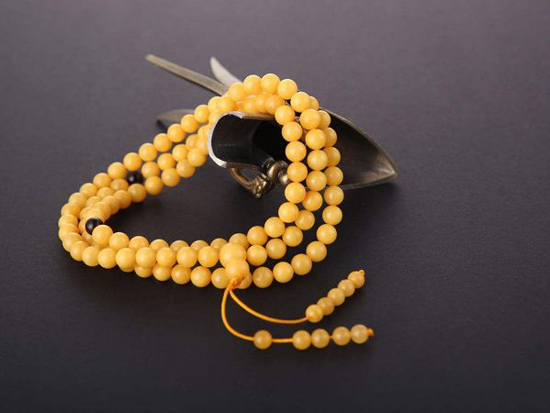In many people's eyes, amber and beeswax are different things. As a traditional gem in our country, beeswax is more related to religion, so many people can't figure out the relationship between the two. In China's jewelry industry, the national standard has not further classified "amber". However, according to, cause, color, different characteristics, industry traditional habits, etc. can be further subdivided.
1. Classification according to the geographical environment of the original mine:
1. Mine Perth:
The ore is directly extracted from the amber of the blue mud in the stratum (this layer of the ground below 100 to 300 miles is called “blue mudâ€). Mines are usually associated with coal. Because of its long-term burial in a relatively stable environment, it has not been damaged by external factors, maintaining its original appearance and relatively good quality. But compared to Haiper, mines contain more impurities. The typical mining areas of the mine are: Myanmar, Fushun, China, and Dominica.
2, Haiper:
The ore deposits in the sea layer or adhere to the coastal rock wall and are remitted into the sea due to the erosion of seawater over the years. This type of amber has been eroded by seawater for many years, and the skin has been damaged to form a polished appearance, and the quality has been affected. But compared to the mine, Haiper is relatively clear and thorough. The typical Haipo production areas are: Baltic countries.

Second, according to the degree of transparency:
Transparent is amber, opaque is beeswax, and transparent and opaque are intertwined.
Wax is divided into new beeswax and old beeswax.
New beeswax: refers to the lighter waxy wax of goose yellow, also known as "chicken oil yellow". Old beeswax: The deeper colored bees are collectively referred to as "old honey."
It needs to be distinguished from the "old beeswax" of antiques. It is only divided by color. The "old beeswax" that antiques said is generally at least the second-hand goods that have been played in the past five or sixty years (the surface of this product is oxidized to form a dark patina, as well as weathered opening pieces, etc.).
The variety of golden twisted honey - pearl honey (by optimization), the variety of golden stranded honey - pearl honey (by optimization)
Third, according to color classification:
1. Mingpo: Mingpo generally refers to amber with a lighter color. (usually through optimized products)
2, red flower pe: the amber of the beautiful red flower (sun flower), is artificially optimized.
3, Jinpo: golden amber. It is characterized by purity, high transparency, close to gold color, and exudes golden light. It is a very expensive variety.
4, brown pel (also known as fire berber): gold brown amber, the color is between the gold and the blood (honey, or dry color)
5, blood: color bright red bloody amber. The quality of blood and blood is mainly based on color, transparency, purity, bright red color, high transparency, purity and no impurities.
6, ç‘¿ :: The color is deeper than the blood, black under normal light, red through the light or strong light. It is generally believed that medicinal value of sputum is higher than other amber.
7, Green Perth: Divided into two kinds - Jinpo's back plating process color is green (internationally recognized, in line with natural product identification standards), natural green, light yellow green, mostly out of the Caribbean. Natural green stalks look golden yellow on a white background, similar to ordinary amber, but on a black background, produce a green luster, similar in principle to Lanper.
8. Lan Po: Lan Po is the same as ordinary amber under normal light, showing a blue fluorescence reaction under a violet light. The top grade is in natural light and the blue color is visible on a black background. Lanpo is a unique species of Dominica and is a precious variety in amber.
In addition: Myanmar's amber also has a fluorescent response, Indonesia also has blue Coba, a very small amount of Mexican amber also appears blue.
9, white honey (also known as bone wax, incense): white beeswax, is the most fragrant variety of amber. Generally, the unpolished white honey can be scented in the hands after being rubbed by hand.
(Amber with skin rubbing with a hand can smell a light and quiet aroma when it is hot, and it is difficult to rub the hand to create aroma after polishing.)
10. Raw ore (also known as raw stone): Amber and beeswax that have not been polished as a whole without retaining the original ore.
Fourth, according to the classification of inclusions:
Ling Po: A remarkable aura of aura, insects and plants. The amber general terminology containing ancient animals and plants is generally referred to as inclusion amber.
1, insects: amber that connots ancient animals. The more insects, the larger the insects, the more special the species, the more expensive the price. - The price of insects can be referenced: the degree of rarity, size, integrity, posture and so on. The probability of occurrence of insects varies from place to place.
2, plant (also known as landscape): connotation of gravel, leaves, flowers, minerals and other special substances of amber collectively called plant
Five, other
1. Fushun Huapo: Fushun's unique variety, opaque, with a pattern of gray, yellowish brown, black and white patterns. (Note: not red flower)
2, Myanmar roots: Myanmar's unique varieties, is a rare production of varieties, opaque, brown, gray, white intertwined color, polished like Dali texture, is generally considered to be formed in the process of calcite adult immersion .
Transparent amber is called amber, translucent and opaque amber is often called beeswax. In fact, amber beeswax is a thing, because in foreign countries, they are called amber.
Air Covered Yarn,Creora Spandex Yarns,Spandex Air Covering Yarn,Dyed Spandex Covering Yarn
Shaoxing Shujin Chemical Fiber Co.,Ltd. , https://www.sxsjfiber.com